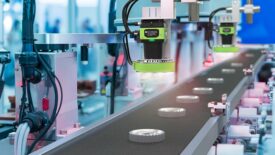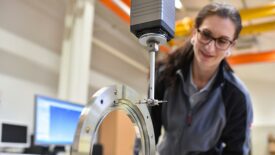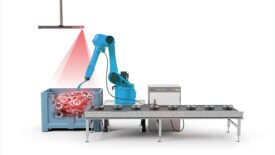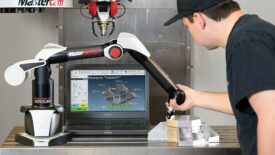Automation
Standards
As manufacturers increasingly use robots, 3-D printing, AI systems and other cutting-edge technologies, they create new risks that are not covered by existing rules. As a result, even the most foundational rulebooks are changing.
Read More
Management
Part 2: Federal Oversight and AI
Combating fake job postings with advanced detection and reporting systems.
April 26, 2025
Automation
The Next Frontier of Automation: Quality Assurance in an AI-Driven Era
The convergence of automation and quality is redefining how manufacturers detect defects, maintain standards, and continuously improve processes.
April 21, 2025
Management
AI’s Double-Edged Sword: Security and Compliance in Manufacturing
Without human oversight, AI tools have the potential to generate risks.
April 11, 2025
Robotics
Automated Bin-Picking: The Latest Way Automakers are Overcoming Manufacturing Challenges
New advancements in vision-guided robotics are enabling auto industry players to eliminate a lingering friction point in an otherwise highly automated, highly efficient process.
March 24, 2025
Aerospace
Balancing Cost and Quality in Aerospace Manufacturing with AI
By leveraging AI tools, manufacturers can achieve the critical balance between efficiency and the aerospace industry’s strict regulatory and safety standards.
March 24, 2025
Trends
Pinpointing 3D Scanning’s Biggest Trends for 2025
These trends could play a critical role in how businesses move the needle on both growing and opening up new potential markets.
March 24, 2025
Automation
Leveraging AI-Powered Anomaly Detection to Transform Quality Inspection
AI-powered quality control relies on multiple advanced technologies to enhance anomaly detection in manufacturing environments.
March 23, 2025
Measurement
Automating Portable Manual CMMs
Closing the digital loop on arms, laser trackers, and scanners.
March 15, 2025
NDT | AI in NDT
AI: A Game-Changer for Automated Defect Detection in NDT
The role of AI in NDT is now at an inflection point, with the use of machine learning and deep learning technologies opening up new horizons.
March 3, 2025
Stay in the know with Quality’s comprehensive coverage of
the manufacturing and metrology industries.
eNewsletter | Website | eMagazine
JOIN TODAY!Copyright ©2025. All Rights Reserved BNP Media.
Design, CMS, Hosting & Web Development :: ePublishing









